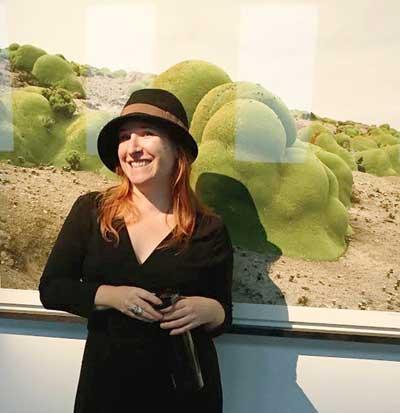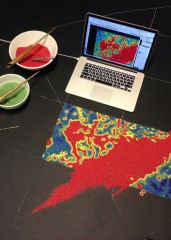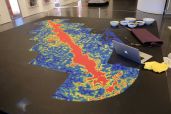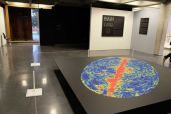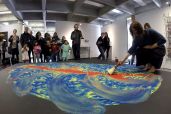AIR Alum
-Rachel is a contemporary artist with a transdisciplinary practice blending art, science, and philosophy. Sussman is a Guggenheim, NYFA and MacDowell Colony Fellow, TED speaker, and author of New York Times bestselling book, The Oldest Living Things in the World. Her recent explorations, begun in conjunction with the LACMA Lab, have helped launch her journey into deep time and deep space in conjunction with SpaceX, NASA JPL, NASA Ames, and CERN.
Image Gallery
Work
Part of my ongoing exploration of deep time and how it can help recontextualize our human experience in the here and now, Cosmic Microwave Mandala is an ephemeral artwork about eternity. I am weaving together the principles of physics exploring the birth and nature of the universe with the traditional Tibetan Buddhist practice of creating sand mandalas.
The Cosmic Microwave Background (CMB), often referred to as the “baby picture of the universe,” is the earliest light in the universe, imprinted on the sky 380,000 years after the Big Bang. It’s not just the earliest light we can see or measure, but truly the first light. Before this time the universe was an opaque plasma of energy and matter: a hot, dense fog of undifferentiated protons, electrons, and photons.
Mandala is a Sanskrit word meaning, circle, cosmogram, or a geometric pattern representing the universe. Sand mandalas have a number of different functions, meanings, and symbologies across different cultural and spiritual traditions. In Tibetan Buddhism some mandals address specific areas of intention including compassion, wisdom, courage in the quest for knowledge, longevity, and healing. All mandalas are thought to have inner, outer, and secret meanings. The actual practice of making a sand mandala is meant to be meditative and healing for those creating it, to heal and uplift the people who see it, and be of overall benefit to the environment it’s in.
In some ways the CMB breaks with the mandala form: the CMB is permanently imprinted on the sky, and mandalas are ceremonially destroyed after they are completed. Mandalas are usually perfect circles, or circles bound within squares, but the CMB is ovoid. (It is oval in shape in order to most accurately express the 3D visualization without distorting or tearing the image on a 2D surface.) But in other, more compelling ways, I am exploring the overlaps of intention, understanding, and integration in the quest to understand the nature of the universe and our role as inhabitants in it.
The mandala was ceremoniously destroyed at the end of the exhibition in keeping with Buddhist beliefs on the transitory nature of life. The sand was collected in specimen jars and given away, in the spirit of spreading the positive energy of the mandala.

